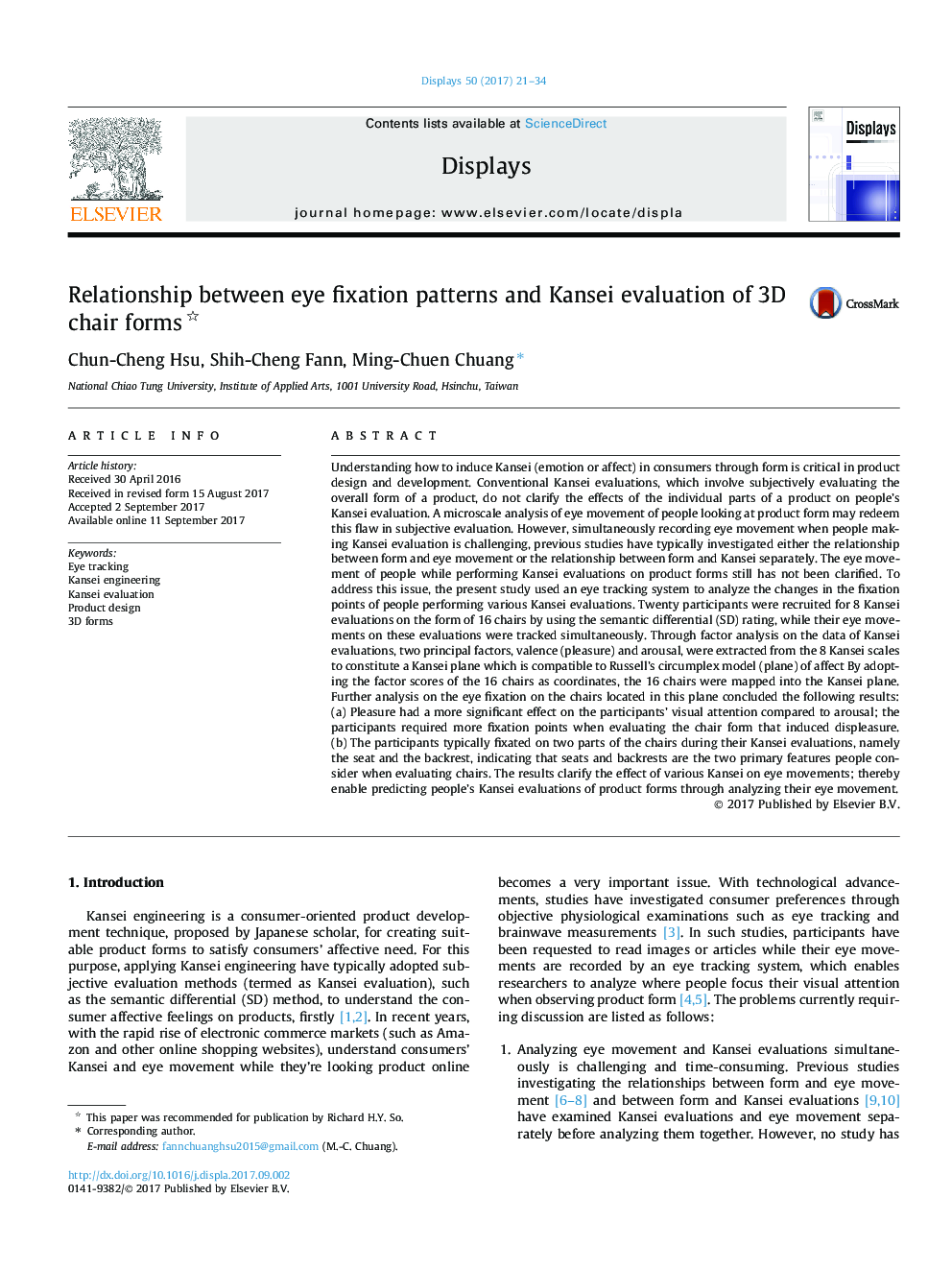| کد مقاله | کد نشریه | سال انتشار | مقاله انگلیسی | نسخه تمام متن |
|---|---|---|---|---|
| 4970549 | 1450182 | 2017 | 14 صفحه PDF | دانلود رایگان |
عنوان انگلیسی مقاله ISI
Relationship between eye fixation patterns and Kansei evaluation of 3D chair forms
دانلود مقاله + سفارش ترجمه
دانلود مقاله ISI انگلیسی
رایگان برای ایرانیان
کلمات کلیدی
موضوعات مرتبط
مهندسی و علوم پایه
مهندسی کامپیوتر
سخت افزارها و معماری
پیش نمایش صفحه اول مقاله

چکیده انگلیسی
Understanding how to induce Kansei (emotion or affect) in consumers through form is critical in product design and development. Conventional Kansei evaluations, which involve subjectively evaluating the overall form of a product, do not clarify the effects of the individual parts of a product on people's Kansei evaluation. A microscale analysis of eye movement of people looking at product form may redeem this flaw in subjective evaluation. However, simultaneously recording eye movement when people making Kansei evaluation is challenging, previous studies have typically investigated either the relationship between form and eye movement or the relationship between form and Kansei separately. The eye movement of people while performing Kansei evaluations on product forms still has not been clarified. To address this issue, the present study used an eye tracking system to analyze the changes in the fixation points of people performing various Kansei evaluations. Twenty participants were recruited for 8 Kansei evaluations on the form of 16 chairs by using the semantic differential (SD) rating, while their eye movements on these evaluations were tracked simultaneously. Through factor analysis on the data of Kansei evaluations, two principal factors, valence (pleasure) and arousal, were extracted from the 8 Kansei scales to constitute a Kansei plane which is compatible to Russell's circumplex model (plane) of affect By adopting the factor scores of the 16 chairs as coordinates, the 16 chairs were mapped into the Kansei plane. Further analysis on the eye fixation on the chairs located in this plane concluded the following results: (a) Pleasure had a more significant effect on the participants' visual attention compared to arousal; the participants required more fixation points when evaluating the chair form that induced displeasure. (b) The participants typically fixated on two parts of the chairs during their Kansei evaluations, namely the seat and the backrest, indicating that seats and backrests are the two primary features people consider when evaluating chairs. The results clarify the effect of various Kansei on eye movements; thereby enable predicting people's Kansei evaluations of product forms through analyzing their eye movement.
ناشر
Database: Elsevier - ScienceDirect (ساینس دایرکت)
Journal: Displays - Volume 50, December 2017, Pages 21-34
Journal: Displays - Volume 50, December 2017, Pages 21-34
نویسندگان
Chun-Cheng Hsu, Shih-Cheng Fann, Ming-Chuen Chuang,